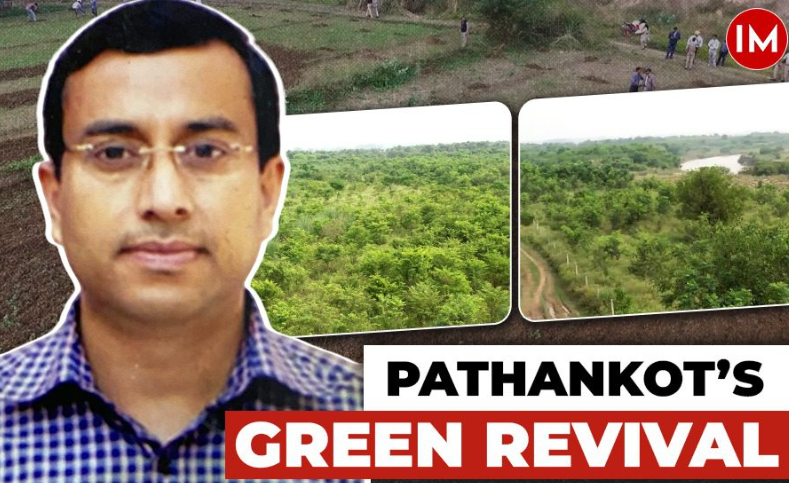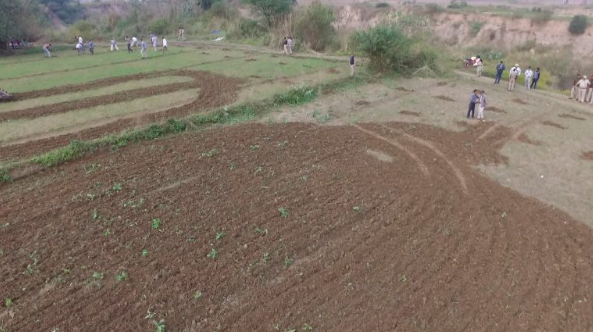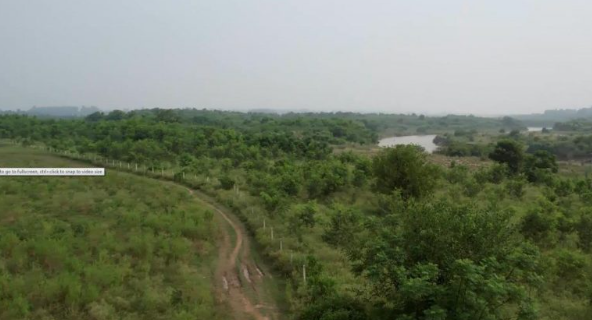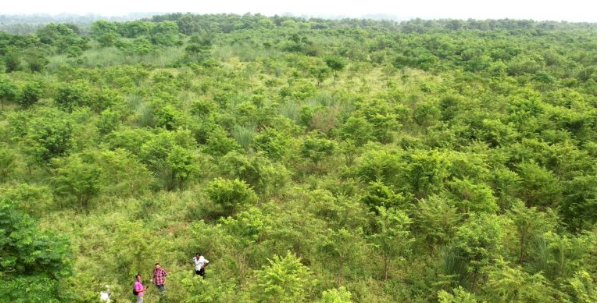“I am writing to the Chief Secretary to request the necessary support for completing the reclamation of the remaining land,” states Dr. Tiwari.

In the early 1900s, the British colonial administration declared a sprawling 27,000-acre tract in Pathankot as a protected forest. This land, comprising both demarcated and un-demarcated protected forests, was notified in 1904 to safeguard its natural resources. However, due to the land not being recorded in the revenue records, residents gradually encroached upon it over the decades. They took possession, cleared trees, and began cultivating crops or constructing farmhouses on the land. This led to a long-standing dispute over land ownership, which would take more than a century to resolve.
Speaking with Indian Masterminds, IFS officer Dr. Sanjeev Kumar Tiwari, who is the Conservator of Forest, Hoshiarpur, shared about the incident in detail.

Historical Challenges in Land Management
The roots of the problem lay in the lack of proper documentation in revenue records, which created opportunities for residents to claim ownership. By the 1980s, local revenue officials, perhaps swayed by various influences, had illegally recorded private ownership of the land in the revenue records. This process, known as “mutation,” wrongly transferred the rights from the state to private individuals. Recognizing this discrepancy, the Forest Department wrote to the Revenue Department in 1986, demanding that the land be returned to the state. The Financial Commissioner (Revenue) then ordered that the land be mutated back in favor of the Forest Department.
However, the affected individuals took the matter to the High Court, where they obtained a stay order that halted the reclamation process. This stay remained in effect for nearly 30 years, until it was vacated in 2014. The High Court directed that the land be restored to the Forest Department, but the directive did not immediately lead to action.
The Role of Dr. Sanjeev Kumar Tiwari
Dr. Sanjeev Kumar Tiwari, an Indian Forest Service (IFS) officer, joined as the Divisional Forest Officer (DFO) in Pathankot in 2017. By this time, despite the High Court’s order, the situation remained largely unchanged, with significant portions of the land still in private hands. Taking up the challenge, Dr. Tiwari initiated a series of actions to implement the court’s directive. He wrote multiple letters to the Deputy Commissioner and the Revenue Department, urging them to update the revenue records as per the court’s instructions.
“I had to start from scratch,” says Dr. Tiwari. “There was no corresponding action from the revenue department, so I had to persistently push for the implementation of the High Court order.”
Under his leadership, a significant portion of the contested land—around 20,000 acres—was successfully reclaimed for the Forest Department over the next four years. The land was entered into revenue records in favor of the Forest Department, which allowed for a series of restoration and reforestation initiatives to commence.

Restoration and Reforestation Efforts
Once the land was back under the control of the Forest Department, a massive reforestation campaign was launched to rehabilitate the area. The region, characterized by semi-hilly terrain, was planted with native species such as Sheesham, Amla, Bamboo, Jamun, Berry, and several medicinal plants like Neem, Harad, and Baheda. The emphasis was on preserving biodiversity and ensuring that the restoration was in harmony with the local ecosystem.
“We planted a variety of native species to reclaim the area and maintain its biodiversity,” explains Dr. Tiwari. “The goal was not just to plant trees, but to restore the ecological balance that had been disrupted.”
Overcoming Local Resistance
The process was not without its challenges. Local resistance was strong, with some landowners filing cases against Dr. Tiwari. In one instance, a woman filed a false complaint, alleging harassment, which was later dismissed. Despite such obstacles, the Forest Department continued its anti-encroachment drives to reclaim the remaining encroached land.
“There were a lot of issues in between, including false complaints against me,” recalls Dr. Tiwari. “But we managed to overcome these hurdles and focus on our goal of reclaiming the forest land.”

Eco-Tourism and Community Involvement
In addition to restoration efforts, Dr. Tiwari also pioneered the development of eco-tourism projects in the reclaimed areas. One of the notable projects was the creation of a mini eco-tourism hub, popularly known as “Mini Goa Punjab,” along the banks of the Ranjeet Sagar Lake. This initiative included the construction of tented accommodations, adventure sports, and water sports facilities, which quickly became a popular destination for tourists.
“By promoting eco-tourism, we not only conserve the forest but also create livelihood opportunities for the local communities,” says Dr. Tiwari. “We have involved the local community in the operation and maintenance of these facilities, with revenues being shared equally between the community and the Forest Department.”
Future Plans
Despite the significant progress, about 7,000 acres of land remain to be reclaimed. Dr. Tiwari, now promoted to Conservator of Forests in Hoshiarpur, continues to advocate for the completion of this reclamation. He is working with higher authorities to ensure that the remaining areas are properly documented in revenue records and that illegal encroachments are removed.
“I am writing to the Chief Secretary to request the necessary support for completing the reclamation of the remaining land,” states Dr. Tiwari. “It is crucial to sustain the momentum and ensure that all forest lands are protected.”

In addition to land reclamation, the Forest Department is also focusing on sustainable management practices. The department has declared the reclaimed forest areas as organic zones, obtaining organic certification for the produce, which has significantly increased their market value. Local communities are being encouraged to participate in non-timber forest produce collection, processing, and marketing, thus ensuring sustainable livelihoods.
A Vision for the Future
The efforts to reclaim and protect Pathankot’s forest lands are ongoing. Dr. Tiwari’s initiatives have not only restored a significant portion of the forest but also brought the local community into the fold, ensuring that conservation efforts are sustainable and inclusive.
“Forestry management is not just about planting trees,” concludes Dr. Tiwari. “It’s about involving communities, ensuring sustainable livelihoods, and preserving our natural heritage for future generations.”
Dr. Tiwari’s vision and dedication have set a benchmark for forest conservation in Punjab, showcasing how determined efforts and community involvement can lead to positive and lasting change.
Article Credit: indianmasterminds